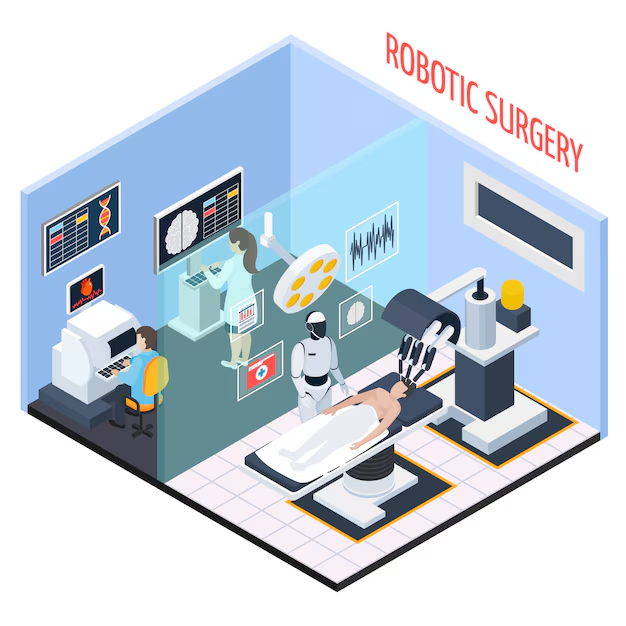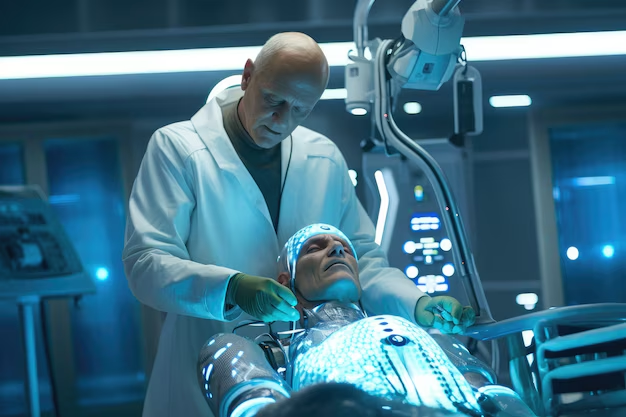In recent years, the integration of robotics into medical procedures has transformed the landscape of healthcare, particularly in the field of Modern Surgery. Medical robots, which are sophisticated machines capable of performing complex tasks under the guidance of skilled surgeons, have revolutionized the way surgeries are conducted. These robots offer enhanced precision, better outcomes, and reduced recovery times, making them a valuable tool in modern medicine. This article explores the role of medical robots in surgery, their benefits, challenges, and what the future holds for this technology.
What Are Medical Robots Modern Surgery?
Medical robots are devices designed to assist in the diagnosis, treatment, and surgery of patients. These robots often work in collaboration with human surgeons, providing them with advanced capabilities that enhance their effectiveness. One of the most well-known robotic systems is the da Vinci Surgical System, which enables surgeons to perform minimally invasive procedures with greater precision. Other robotic systems focus on orthopedic surgeries, neuro-surgery, and even rehabilitation.
Medical robots typically consist of a computer console, robotic arms, and imaging systems that allow surgeons to view the surgical site in great detail. The robotic arms can be controlled by the surgeon, who operates them through a console that provides real-time feedback. With advanced sensors and imaging technology, these robots can perform intricate tasks with exceptional accuracy.
The Benefits of Medical Robots in Modern Surgery
1. Enhanced Precision and Accuracy
One of the primary benefits of medical robots is their ability to offer unparalleled precision during surgeries. Robots can operate with smaller, more controlled movements than a human hand, reducing the risk of human error. This precision is particularly crucial in delicate surgeries, such as those involving the brain, heart, or spine, where even the slightest mistake can lead to complications.
2. Minimally Invasive Procedures
Robotic systems enable surgeons to perform minimally invasive surgeries, which involve smaller incisions and reduced trauma to the body. These procedures typically lead to less blood loss, reduced pain, and faster recovery times. Patients who undergo robotic-assisted surgery generally experience shorter hospital stays and return to their daily activities more quickly than those who undergo traditional surgery.
3. Improved Surgical Visualization
Medical robots are equipped with high-definition cameras and advanced imaging systems that allow surgeons to view the surgical area in great detail. These cameras provide a 3D view, enabling surgeons to navigate the body with greater clarity. This enhanced visualization ensures that the surgeon can accurately target the affected area and avoid surrounding healthy tissue.

4. Reduced Risk of Infection
Since robotic surgeries often require smaller incisions, the risk of infection is typically lower than with traditional open surgeries. Fewer and smaller cuts reduce the likelihood of bacteria entering the body, leading to fewer post-surgical complications. Additionally, many robots are equipped with tools that can be sterilized more easily than conventional surgical instruments, further minimizing infection risks.
5. Faster Recovery and Shorter Hospital Stays
With the reduced trauma associated with robotic surgeries, patients often experience faster recovery times. The smaller incisions and more precise work allow for quicker healing, meaning many patients are able to go home sooner and resume normal activities at a quicker pace.
Challenges of Medical Robots in Modern Surgery
Despite their many advantages, the use of medical robots in surgery is not without challenges. The technology, while advanced, is expensive, making it accessible only to well-funded hospitals and clinics. The initial investment in robotic systems, along with the cost of maintenance and staff training, can be prohibitive for some healthcare institutions.
Additionally, while robots are designed to assist surgeons, they still rely on human oversight. Surgeons must be highly trained to operate robotic systems, and technical failures or malfunctions could jeopardize the success of the surgery. Robotic systems also require continuous updates and monitoring, which can sometimes lead to delays or complications during the procedure.
Lastly, there is a learning curve for surgeons transitioning from traditional techniques to robotic-assisted methods. While robotic systems provide excellent support, it takes time for surgeons to become fully proficient, which may affect the outcome of surgeries in the early stages of adoption.

The Future of Medical Robots in Modern Surgery
As technology continues to evolve, the role of robots in surgery is expected to grow. Future advancements will likely lead to even more sophisticated systems that offer greater autonomy in the operating room. In particular, the development of AI-driven surgical robots could enhance decision-making capabilities by analyzing vast amounts of data to determine the most effective course of action during a procedure.
Another exciting possibility is the integration of remote surgery, where surgeons can operate on patients from a different location. This would increase access to specialized surgical care, especially for patients in remote or underserved areas.
Also Read : What Are The Key Components Of Effective Mental Health Care?
Conclusion
Medical robots have ushered in a new era of surgery, offering enhanced precision, faster recovery times, and a reduction in complications. While there are still challenges to overcome, such as the cost of technology and the need for skilled operators, the future of robotic surgery looks promising. As advancements in AI, machine learning, and robotic technology continue to progress, the role of robots in surgery will only become more significant, ultimately improving patient outcomes and revolutionizing healthcare delivery.
FAQs about Medical Robots in Modern Surgery
1. What types of surgeries can medical robots assist with?
Medical robots are used in a wide range of procedures, including cardiothoracic surgery, neurosurgery, orthopedic surgery, urological procedures, and gastrointestinal surgeries. They are particularly effective in minimally invasive surgeries.
2. Are robotic surgeries safer than traditional surgeries?
While robotic surgeries offer greater precision and reduced risks of infection, all surgeries carry some inherent risk. However, due to the technology’s ability to minimize human error, many studies suggest robotic surgery results in fewer complications and faster recovery times.
3. How much do medical robots cost?
The cost of medical robots can vary widely, with prices ranging from $1 million to $2.5 million for the robotic systems themselves. Maintenance, training, and operational costs can add to the overall expense.
4. Do surgeons control the robots directly?
Yes, surgeons control robotic systems from a console in the operating room, where they can see high-definition images of the surgical area and manipulate the robot’s arms with precision.
5. Are medical robots replacing human surgeons?
No, medical robots do not replace human surgeons. They are tools that enhance a surgeon’s capabilities, offering greater precision and improving outcomes. Surgeons remain integral to the process, providing expertise and decision-making during surgery.




